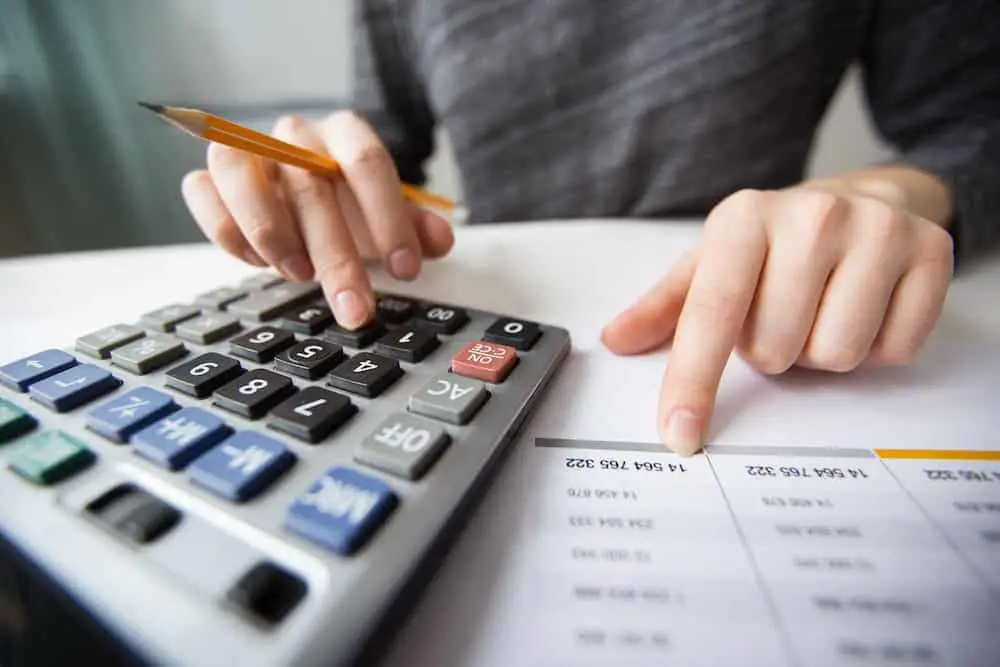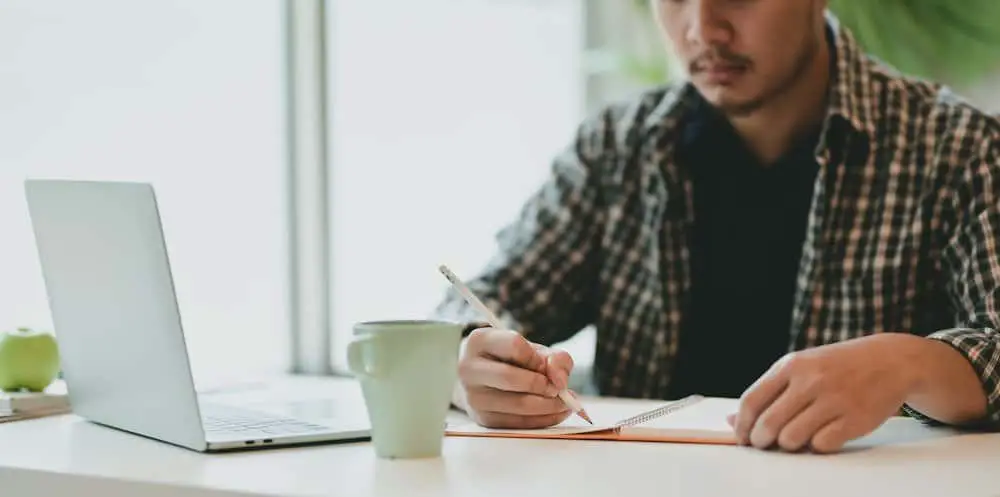Having a neat and organized bank account is just like having a neat and clean bed, it creates a chain reaction of clarity for other parts of your life. When it comes to checking your bank account, how often should you access it?
Here in the states, having an FDIC insured bank account means you’re protected for up to $250,000. That’s quite a good chunk of change to be protected with. It means that even if the financial institution went under, you’d be protected for up to that amount. Even at that rate, I typically monitor my checking account at least once or twice a week, a good rule of thumb for you too.
Identity theft is a big thing these days, and you can never be too watchful for any suspicious activity. For me, I follow a very organized money flow routine that I learned from Mike Michaelowicz’s book Profit First.
Before I read the book, I had 2 checking accounts and 1 saving account, and I can’t really remember the purpose for them. I had this routine since around 2017, and would just somewhat try to split the money up into different accounts to allocate for different purposes.
After I read Profit First, my banking life changed. I immediately created more bank accounts and split up my business and personal bank accounts entirely.
See, I’m self-employed, and before I’d have a single bank account for both my business and personal needs (I was a messy sole proprietorship). This might be how you see yourself now.
I’d make money, spend money, pay my bills, and whatever I had leftover might go towards my Roth IRA and other investments I had. I used my traditional savings account to just store some funds, without much thought behind it, and never used an atm card or checks.
The only time I was hit with unexpected fees was the times where I would get overdraft fees for being below a balance or having no balance at all. Make sure you know the overdraft fee rules for your own bank.
This was a very sucky way of doing things, similar to a messy room. You just don’t want to go in it, and even spend the time cleaning it. As it gets messier, the time to clean it gets longer, and you’re less likely to ever do it.
This is the reason that after a few years of keeping my money clean and organized in my bank accounts that I typically check my accounts at least twice a week.
My new way of organizing money in my checking accounts

Before, I had 3 different accounts that just had the money for various temporary reasons.
Now I methodically have different accounts both in my business and personal bank account.
Let me share one quick tip. You can create multiple bank accounts, and then tie them all together with a single online banking login. You don’t need to log into different accounts to manage them.
This is for personal finance, so I won’t discuss my business aspect, but it follows a similar process.
For my personal account, I have 3 total checking accounts at my local bank, and then several more savings accounts at a high yield return online bank.
First, let’s talk about my local bank setup.
The first is for incoming cash like payroll, and any transfers in and out of investments. I think of it as the inflow of cash to my personal bank account.
Whatever amount of money is here, I clean it up so that it’s always a neat $1000.
The rest of the money always gets moved into the 2 other accounts. The $1,000 in this incoming account acts as a buffer for any minimum balance needs.
The second account is called my “monthly out” account. This is the account that I use to pay all my bills, and where all I also transfer out any savings goals to that high-yield savings account in another bank.
The third and final account at my local bank is my investment folder. This folder is where I look at to many frequent investments towards any goal, whether it’s towards a Roth contribution or traditional brokerage, or even buying bitcoin.
Each of these accounts has a specific “allocation” number that I go by. This is the big thing that I learned from the Profit First book.
I mentioned before that I always keep my incoming bank account at $1000.
Anytime I get income that comes into this account, I allocate that money to the “monthly out” and “investment” folder, specifically sending 60% to monthly out and 40% towards investment.
This 60/40 number has changed over the years as I am able to allocate more towards investing while I can still maintain my lifestyle with the 60% leftover.
Try this out, and tell me how you made your own formula in the comments below.
Why checking your bank accounts regularly is important
2 words, fraudulent transactions.
According to some Wikipedia data, fraud is a billion-dollar a year business, and it’s only increasing every year as we get more into a tech-heavy future.
When I checked my own bank details regarding fraud, I was surprised to see how drastically different the help is when you react to fraud quickly, compared to catching it later.
Fraud Liability: In accordance with federal regulations, you can only be held responsible for $50 worth of fraudulent charges reported within two days of the charge. If you report the charges after two days, you can be held accountable for the entire amount of the charges.
With the benefits of technology and its conveniences (like finger touch and facial recognition), we tend to get sloppy with security.
It can be our fault in the way of weak passwords, and ones that don’t change often (a quick tip is to change all your important passwords every 2-3 months).
Hackers are also getting smarter, so it’s even that much more important that we stay aware and level up with our own protection.
The simplest way to do this is to check your bank account transactions every 2-3 days. It only takes a minute, but it saves so much headache by catching any issues right away instead of weeks later.
By checking your bank account regularly, you can…
- Keep tabs on any unnecessary hidden fees like bank overdraft fees (you can sometimes get the first or second overdraft fee returned with a simple call).
- Make sure that your minimum balances are met and you don’t have any fees here either. In my story above I shared how I keep it very simple by making sure that the account has a clean $1,000 every time I go to review it. Helps me quickly scan and move on.
- Make sure that any direct deposit transactions from your employer and other places are all coming in properly. Proper cash flow is a must!
- Overall making sure that your account activity is healthy.
Conclusion
I made a long story out of a simple question, but I really wanted to make sure you understood my perspective on this topic.
A bank account is pretty necessary for everyone, and keeping it neat and tidy with your money is extremely important. As the saying goes “what you focus on, expands”, and so I hope that by making the habit of checking your own bank account at least two times a week means your account is that much cleaner and expanding into more wealth.

